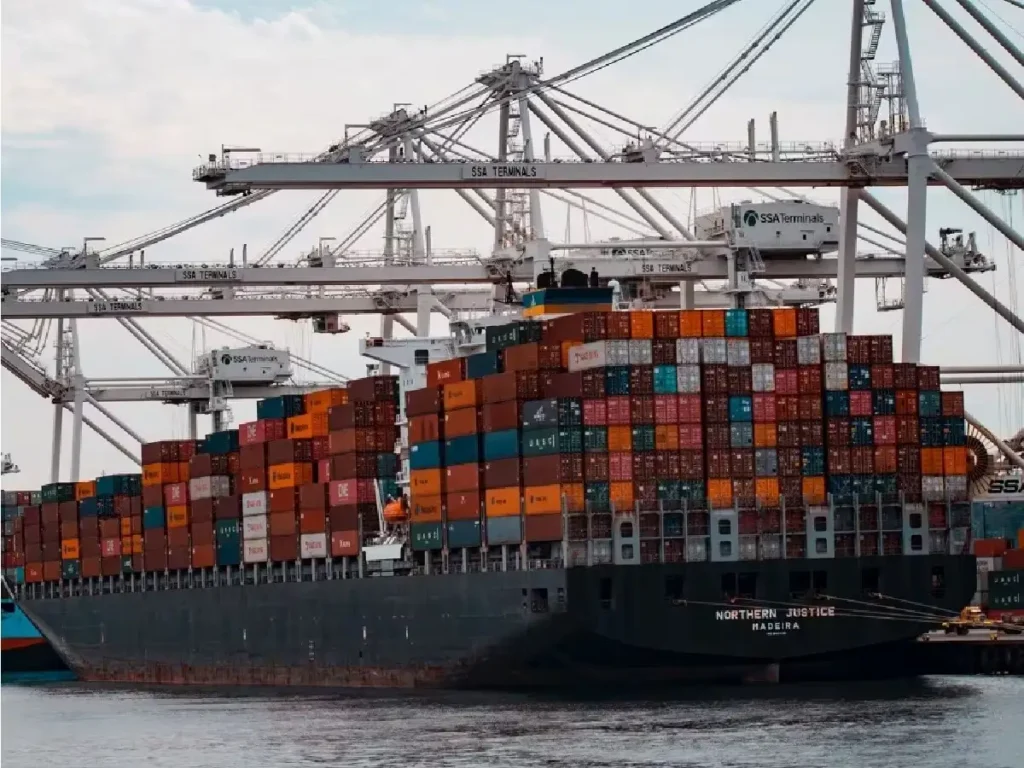US Remains India’s Top Trading Partner for Fourth Year in a Row in 2024-25
New Delhi — The United States has once again emerged as India’s largest trading partner for the fourth consecutive fiscal year, with bilateral trade between the two countries reaching a substantial USD 131.84 billion in 2024-25. This continued trade momentum highlights the growing economic relationship between the world’s largest and fifth-largest economies, despite global uncertainties and shifting supply chains.

According to the latest data released by the Ministry of Commerce, India’s exports to the US saw a healthy growth of 11.6%, climbing from USD 77.52 billion in 2023-24 to USD 86.51 billion in 2024-25. Imports from the US also rose by 7.44%, amounting to USD 45.33 billion compared to USD 42.2 billion in the previous fiscal year.
This resulted in a trade surplus of USD 41.18 billion in India’s favor—an increase from the USD 35.32 billion surplus recorded in 2023-24. The widening surplus underlines the growing strength of India’s export sector to the American market.
Key Export and Import Highlights
India’s export basket to the US in 2024-25 was diverse and high-value. Leading the charge were drug formulations and biologicals, with shipments worth USD 8.1 billion. Telecom instruments (USD 6.5 billion), precious and semi-precious stones (USD 5.3 billion), and petroleum products (USD 4.1 billion) also contributed significantly.
Other major exports included gold and other precious metal jewelry (USD 3.2 billion), ready-made cotton garments including accessories (USD 2.8 billion), and iron and steel products (USD 2.7 billion).
On the import side, India sourced a wide range of products from the US, with crude oil imports valued at USD 4.5 billion. Other key imports included petroleum products (USD 3.6 billion), coal and coke (USD 3.4 billion), cut and polished diamonds (USD 2.6 billion), electric machinery (USD 1.4 billion), aircraft and parts (USD 1.3 billion), and gold (USD 1.3 billion).
China Still Second Largest Partner, But With a Widening Trade Gap
While the US retained its top spot, China continued to be India’s second-largest trading partner with total bilateral trade amounting to USD 127.7 billion in 2024-25. However, this relationship presents a more complex picture, primarily due to the massive and growing trade deficit India faces with China.
Exports from India to China fell sharply by 14.5%, totaling only USD 14.25 billion—down from USD 16.66 billion the year before. Meanwhile, imports from China increased by 11.52%, rising from USD 101.73 billion in 2023-24 to USD 113.45 billion in 2024-25. As a result, India’s trade deficit with China ballooned to USD 99.2 billion, a significant jump from USD 85.07 billion in the previous fiscal year.
Experts view this growing gap with concern. According to Ajay Srivastava, founder of the Global Trade Research Initiative (GTRI), “India’s trade deficit with China has reached a staggering USD 99.2 billion in FY25—a record gap that signals more than just a trade imbalance. It reflects deeper structural dependencies.”
Dependency on Chinese Inputs
Srivastava explained that China remains India’s top supplier across all eight major industrial product categories. Imports have surged mainly due to rising demand for electronics, electric vehicle batteries, solar cells, and key industrial inputs—areas in which China maintains a dominant position in global supply chains.
What complicates the picture further is that even India’s own industrial growth initiatives, like the Production Linked Incentive (PLI) schemes, are indirectly fueling Chinese imports because they heavily rely on imported components.
“The alarming part is not just that imports from China are rising, but that our exports to China are actually declining—falling below the levels recorded in 2014, despite the rupee being stronger back then. This isn’t just a trade issue; it’s a competitiveness crisis,” Srivastava noted.
He stressed the need for India to strengthen its internal manufacturing capabilities and reduce its dependency on external supply chains, particularly for critical sectors. “Without building deep industrial strength domestically, this trade deficit will only keep growing,” he warned.
UAE Holds Strong at Third Spot
Meanwhile, the United Arab Emirates (UAE) remained India’s third-largest trading partner, with bilateral trade totaling USD 100.5 billion in 2024-25. The UAE has consistently been one of India’s most significant trade allies, owing to strong energy ties and growing economic cooperation under the India-UAE Comprehensive Economic Partnership Agreement (CEPA).
Looking Ahead: India-US Trade Ties Poised to Grow Further
India and the US are currently in talks to expand their trade relationship further through a new trade agreement. The goal is ambitious—boosting two-way trade in goods and services to USD 500 billion by 2030 from the current combined value of approximately USD 191 billion. If successful, this could cement the US-India trade corridor as one of the world’s most influential bilateral economic relationships.
Both nations have shown intent to strengthen ties across sectors like defense, technology, pharmaceuticals, energy, and digital trade. As India continues to position itself as a global manufacturing and innovation hub, especially in the post-pandemic world, its deepening engagement with the US could play a crucial role in reshaping its trade landscape.
Conclusion
The latest trade figures underscore a tale of two very different partnerships. While India’s trade with the US continues to thrive and grow in a balanced manner, its engagement with China is marked by a rising trade deficit and deeper economic dependence. The challenge for India moving forward will be to leverage its strong relationships with partners like the US and UAE while addressing internal inefficiencies and reducing reliance on Chinese imports. Strengthening domestic manufacturing and boosting global competitiveness could hold the key to a more balanced and resilient trade future.






